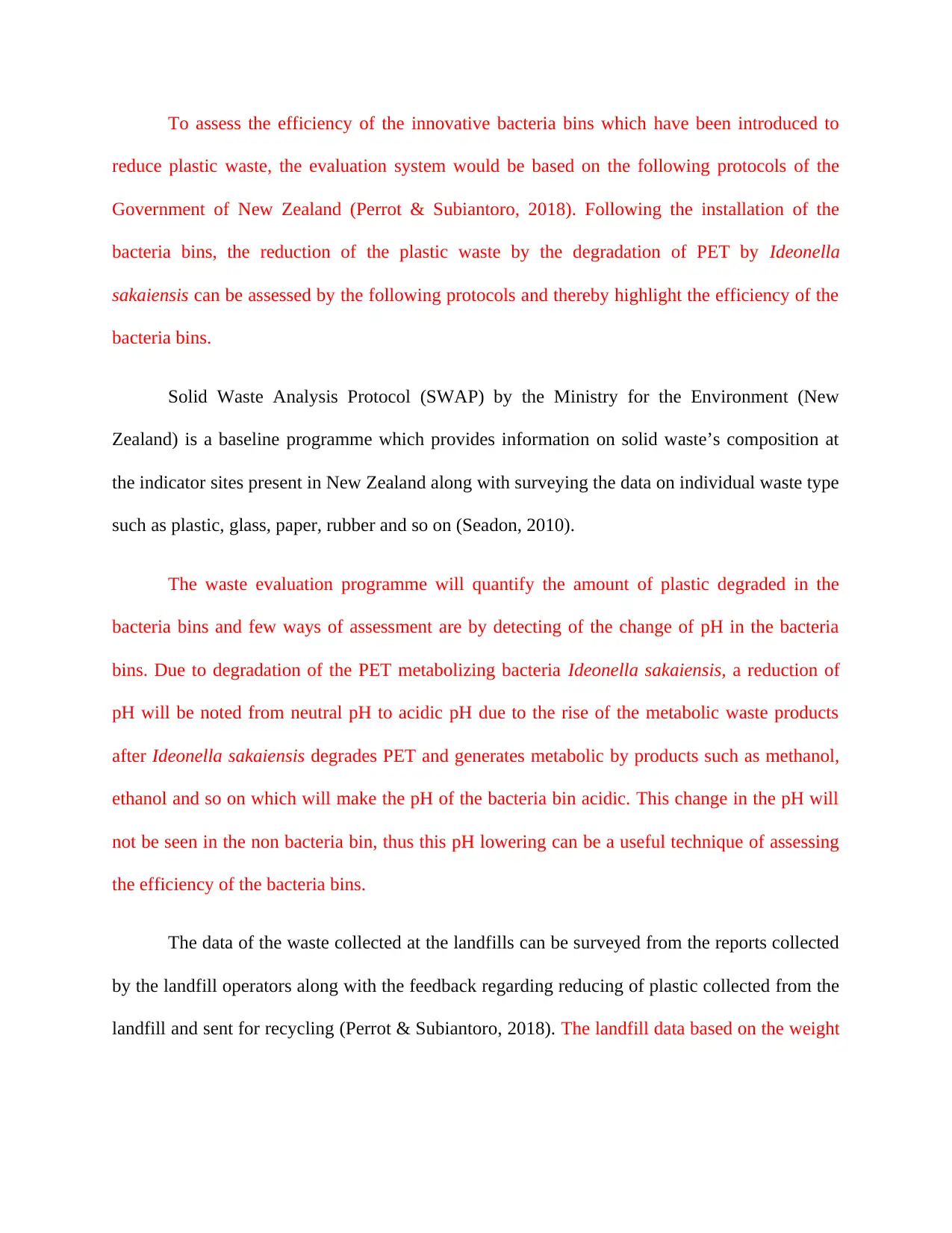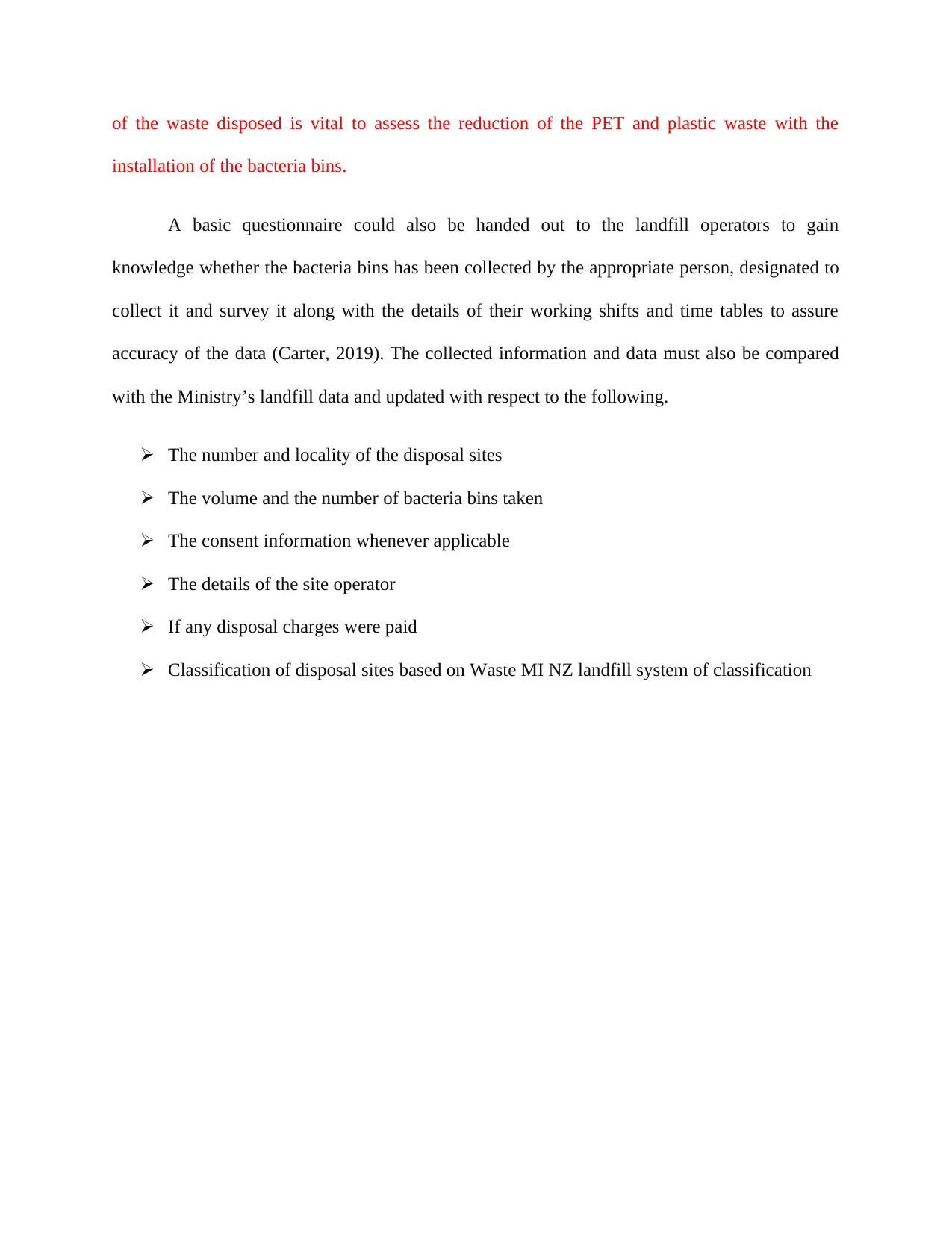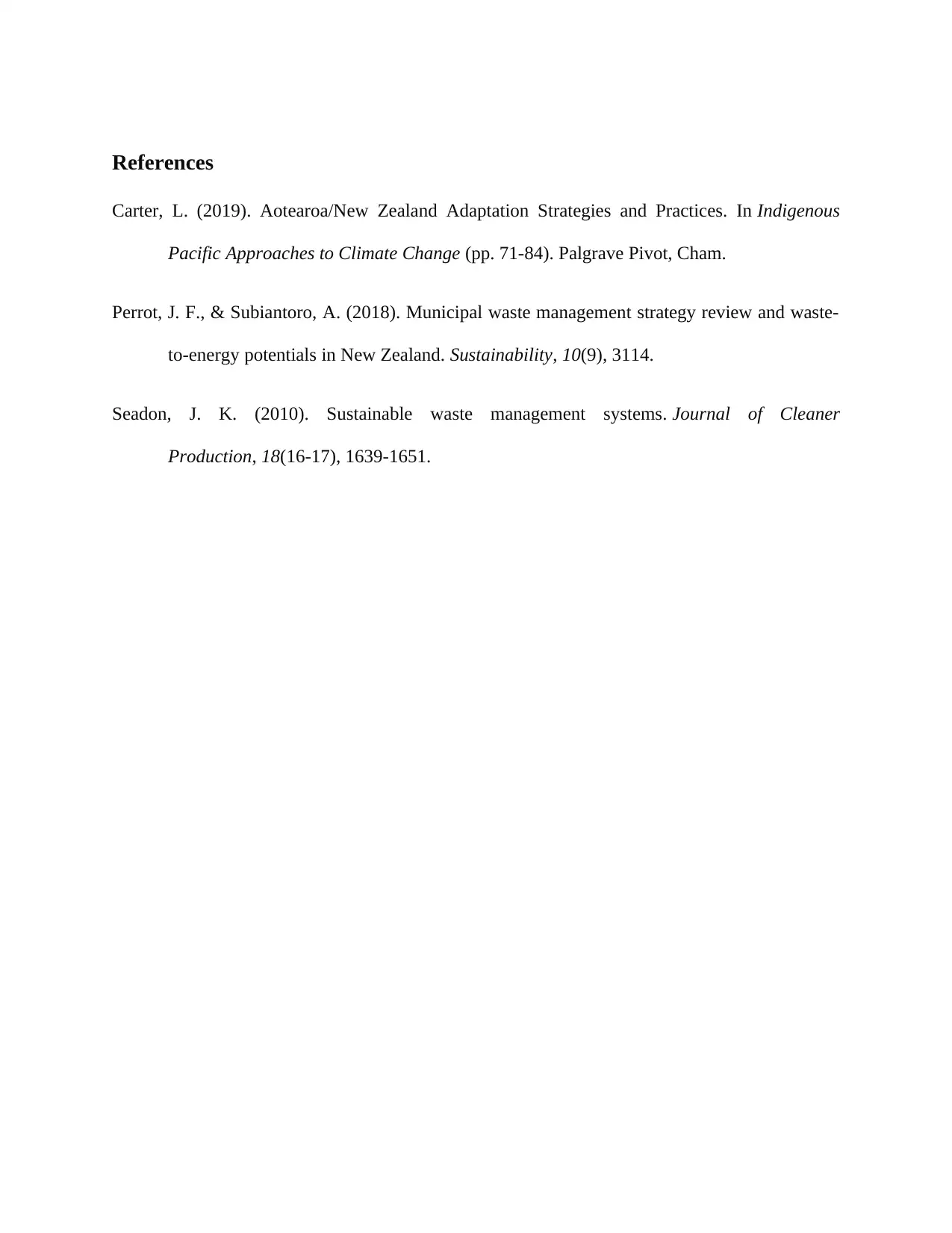Evaluating Bacteria Bins for Plastic Waste Reduction in New Zealand
VerifiedAdded on 2022/09/18
|3
|570
|23
Project
AI Summary
This project assesses the efficiency of innovative bacteria bins designed to reduce plastic waste in New Zealand, based on protocols from the New Zealand government. The evaluation focuses on the degradation of PET plastic by Ideonella sakaiensis, examining the Solid Waste Analysis Protocol (SWAP) and landfill data. The assessment methods include monitoring pH changes in the bins, surveying landfill data, and using questionnaires for landfill operators. The data collected will be compared with the Ministry’s landfill data, considering the number of disposal sites, bin volume, and disposal charges. The aim is to quantify the reduction in plastic waste and evaluate the effectiveness of the bacteria bins in promoting sustainable waste management practices. The project also addresses the health issue of plastic pollution and sustainability, proposing bacteria bins as an innovative solution for plastic recycling and removal in New Zealand's urban areas.
1 out of 3




![[object Object]](/_next/static/media/star-bottom.7253800d.svg)